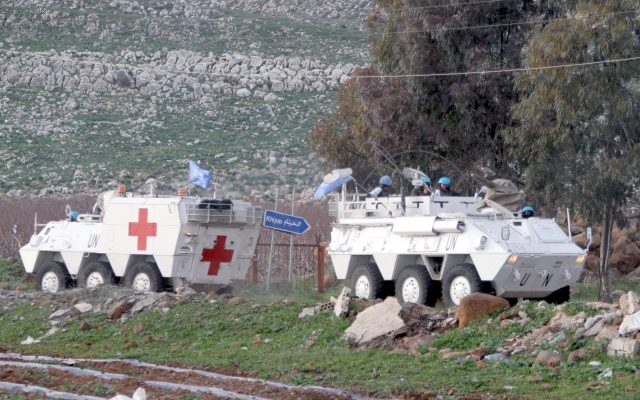 Newsletter 13-20 lipca 2017
Newsletter 13-20 lipca 2017
ŻIH
|
Newsletter 13-20 lipca 2017
|
 |
|
|
 |
|
OPOWIEŚCI O NALEWKACH.
W CZASIE NIEMIECKIEJ OKUPACJI I PO WOJNIE
13 lipca, godz.18:00
Ogród Krasińskich od ul. Bohaterów Getta (d. Nalewki)
Zapraszamy na kolejne spotkanie na dawnych Nalewkach. Tym razem skupimy się na części wystawy poświęconej czasom niemieckiej okupacji i latach powojennych. W programie oprowadzanie przez autorów ekspozycji. Bombardowania niemieckie we wrześniu 1939 r. spowodowały zniszczenie Pasażu Simonsa, centrum handlowego u zbiegu ulic Długiej i Nalewek, a 16 listopada 1940, ulica została przecięta murem – jej północna część znalazła się w granicach getta, w którym zamknięto warszawskich Żydów, oddzielając ich od reszty mieszkańców. W pobliżu Ogrodu Krasińskich zbudowano jedną z bram getta. |
|
|
 |
|
WYSTAWA PLENEROWA
Nalewki. Opowieść o nieistniejącej ulicy. Ogród Krasińskich od ul. Bohaterów Getta (d. Nalewki)Była kiedyś ulica, o której mówiono, że jest sercem żydowskiej Warszawy. Można tam było kupić niemal wszystko, od parasoli u Putermana pod numerem jedenastym, przez części rowerowe i patefony pod trzynastką, po wyroby importowane z Palestyny w sklepie „Tel Awiw” pod piątką. Kłębiący się na ulicy tłum ludzi, wśród których królował język jidysz, co rusz zachodził do oficyn, kupował, sprzedawał i dyskutował na olbrzymich, stanowiących niemal osobne światy, podwórkach. Gdzieś w tle słychać było pisk przejeżdżającego przez środek ulicy tramwaju. Rzut oka na stare zdjęcia pozwala uwierzyć, że było to jedno z najbardziej przeludnionych miejsc w przedwojennej Europie. Tym miejscem była ulica Nalewki. Tego świata już jednak nie ma. 75 lat temu Niemcy rozpoczęli Aktion Reinhardt, w wyniku której zginęło prawie 2 miliony Żydów polskich, z warszawskiego getta w ciągu dwóch miesięcy do obozu śmierci w Treblince wywiezionych zostało 300 000 osób. Przedwojenny świat polskich Żydów przestał istnieć.Dziś jednymi z niewielu materialnych pamiątek po dawnych Nalewkach są biegnące przez ulicę Bohaterów Getta, prowadzące donikąd tory tramwajowe oraz położony na skrzyżowaniu z ulicą Długą budynek Arsenału.Zapraszamy do Ogrodu Krasińskich na plenerową wystawę „Nalewki. Opowieść o nieistniejącej ulicy. W 75. rocznicę Aktion Reinhardt”. |
|
|
 |
|
MARSZ PAMIĘCI 22 LIPCA 2017 22 lipca 1942 roku Niemcy rozpoczęli deportację mieszkańców warszawskiego getta do Treblinki. Trwająca niespełna 2 miesiące brutalna akcja likwidacyjna doprowadziła do śmierci 300.000 Żydów z Warszawy i okolicznych miejscowości. W 75. rocznicę tych wydarzeń, Żydowski Instytut Historyczny im. Emanuela Ringelbluma, już po raz szósty, pragnie uczcić pamięć ofiar organizując Marsz Pamięci 22 lipca, który przejdzie ulicami unicestwionego getta. W ten sposób oddamy hołd największej społeczności żydowskiej przedwojennej Europy. Tegoroczny Marsz Pamięci 22 lipca w sposób szczególny dedykujemy członkom grupy Oneg Szabat – twórcom Podziemnego Archiwum Getta Warszawskiego. Marsz wyruszy 22 lipca o godz. 19:00 spod pomnika Umschlagplatz i przemierzy symboliczną trasę “od śmierci do życia”, która w tym roku zakończy się przed budynkiem Żydowskiego Instytutu Historycznego, gdzie pod przykrywką prac biur Samopomocy działała konspiracyjna organizacja Oneg Szabat. Wydarzenie organizowane jest w ramach 75. rocznicy Aktion Reinhardt i Zagłady Żydów polskich dokonanej przez niemiecką III Rzeszę. |
|
|
 |
|
GENEZA I PRZEBIEG AKCJI REINHARDT
Artykuł prof. Andrzeja Żbikowskiego rozpoczyna cykl publikacji upamiętniających członków grupy „Oneg Szabat”, której w szczególny sposób jest dedykowany tegoroczny Marsz Pamięci 22 lipca.
W powstałym na mocy dekretu Hitlera z 12 października 1939 r. Generalnym Gubernatorstwie mieszkało w czterech dystryktach (warszawskim, radomskim, krakowskim, lubelskim) niecałe półtora miliona osób uznanych zgodnie z Ustawami Norymberskimi z 1935 r. za Żydów (łącznie z ziemiami włączonymi pod okupacją niemiecką znalazło się 1,8–1,9 mln). O ich położeniu prawnym zadecydowało zarządzenie Reinharda Heydricha z 21 września (tzw. Schnellbrief). Zgodnie z nim wszyscy Żydzi mieli zostać skoncentrowani w wyodrębnionych i wyizolowanych dzielnicach większych miast, położonych w pobliżu linii kolejowych. Od 11 grudnia 1939 r. Żydzi z GG mogli się jedynie przemieszczać w miejscu zamieszkania, od stycznia 1940 r. zabroniono im podróżowania pociągami bez specjalnego zezwolenia.
|
|
|
|
|
|
|
twoje uwagi, linki, wlasne artykuly, lub wiadomosci przeslij do: webmaster@reunion68.com





